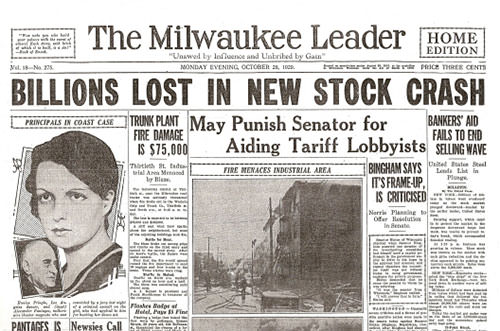1929 Stock Market Crash
The 1920s, “the Roaring Twenties”, in the United States was a time of booming economic expansion with new manufacturing, agricultural improvements, and labour productivity all leading to a feeling of confidence in the future. America seemed to have dodged the economic malaise that was plaguing Europe in the wake of the Great War and leading to extremist political movements. Great trust was placed in the stock market with many believing that they could profit from speculative buying on easy terms (“margin buying” allowed one to purchase stocks at a fraction of their value in the hope that a rise in price would produce a profit with little risk). “Stock prices have reached what looks like a permanently high plateau”, said an economist.
But by 1929 there were uneasy signs: there was a glut of produce, producing panic in the agricultural sector; markets for steel and manufactured goods seemed to be saturated; consumer debt was too high; and brokers were starting to dump shares, suppressing the value of the stock market. There was a minor panic in September which optimists thought might be just a market correction that produced some bargains. But it was not to be so. On October 24, 1929 it was “Black Tuesday”.
The stock market opened that day with a mass sell-off of shares by investors trying to get out while they could; this continued over the next few days, prompting big banks and tycoons to try to shore up the market by buying stocks at inflated prices. This confidence-building effort proved a failure as sellers greatly outnumbered buyers and some shares could not be sold at any price. The market would not return to the level reached on September 3, 1929 until November 23, 1954. The Great Depression that would devastate the world economy had begun.
